Kyra Kapsaskis
The Liar's Walk: Detecting Deception with Gait and Gesture
Dec 20, 2019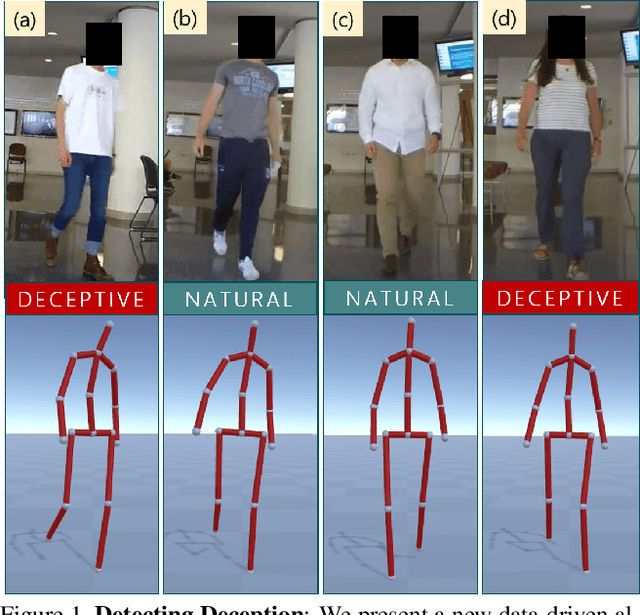
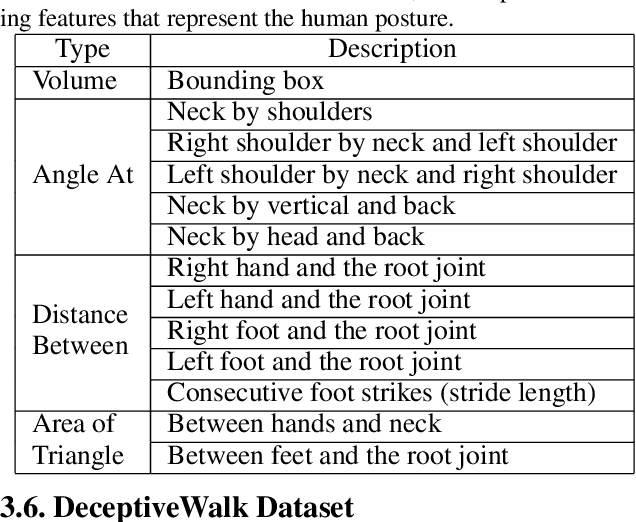
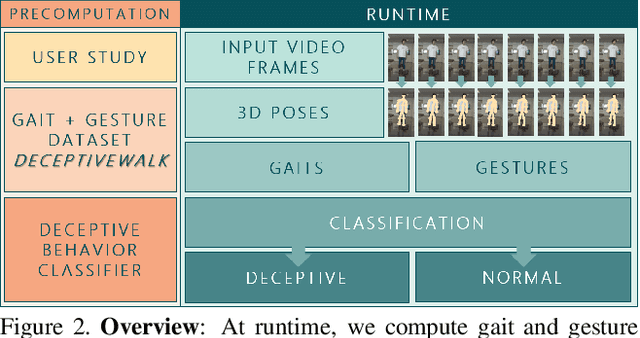

Abstract:We present a data-driven deep neural algorithm for detecting deceptive walking behavior using nonverbal cues like gaits and gestures. We conducted an elaborate user study, where we recorded many participants performing tasks involving deceptive walking. We extract the participants' walking gaits as series of 3D poses. We annotate various gestures performed by participants during their tasks. Based on the gait and gesture data, we train an LSTM-based deep neural network to obtain deep features. Finally, we use a combination of psychology-based gait, gesture, and deep features to detect deceptive walking with an accuracy of 93.4%. This is an improvement of 16.1% over handcrafted gait and gesture features and an improvement of 5.9% and 10.1% over classifiers based on the state-of-the-art emotion and action classification algorithms, respectively. Additionally, we present a novel dataset, DeceptiveWalk, that contains gaits and gestures with their associated deception labels. To the best of our knowledge, ours is the first algorithm to detect deceptive behavior using non-verbal cues of gait and gesture.
Identifying Emotions from Walking using Affective and Deep Features
Jul 21, 2019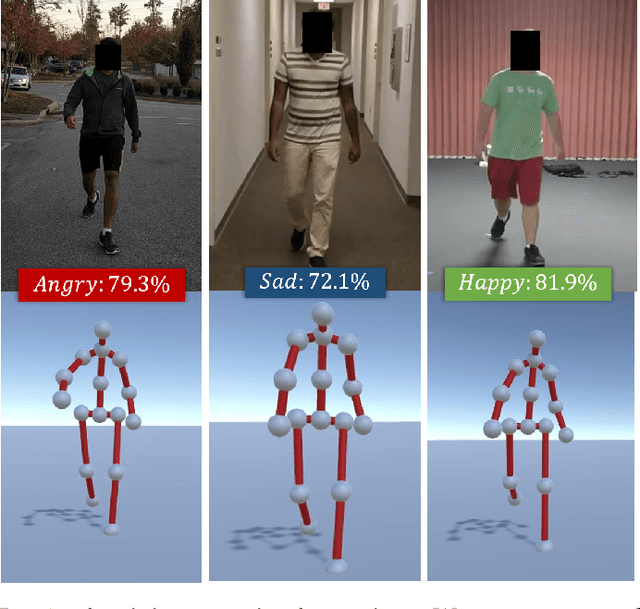
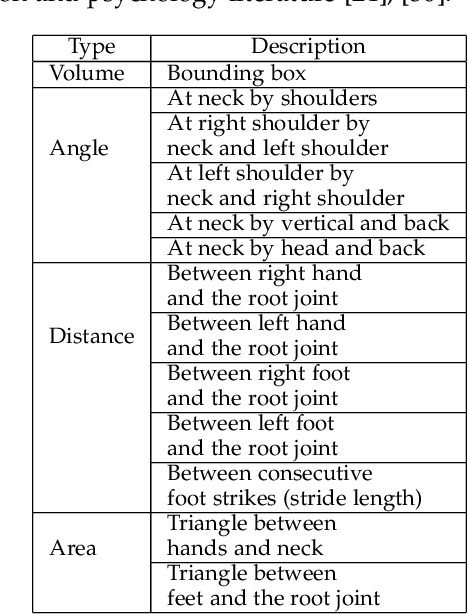
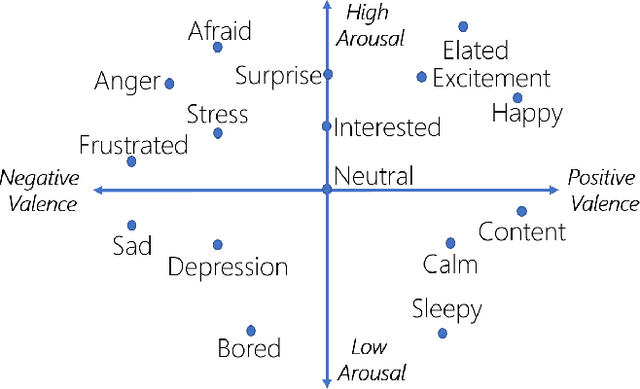
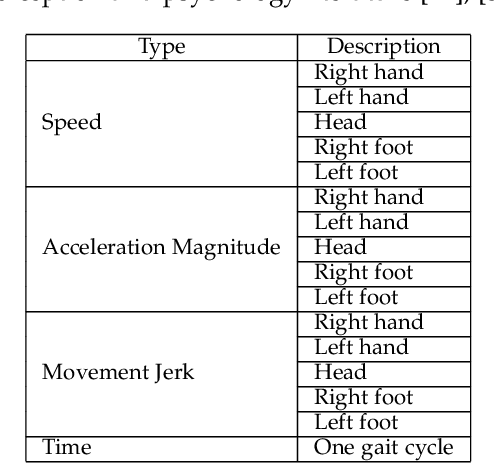
Abstract:We present a new data-driven model and algorithm to identify the perceived emotions of individuals based on their walking styles. Given an RGB video of an individual walking, we extract his/her walking gait in the form of a series of 3D poses. Our goal is to exploit the gait features to classify the emotional state of the human into one of four emotions: happy, sad, angry, or neutral. Our perceived emotion recognition approach uses deep features learned via LSTM on labeled emotion datasets. Furthermore, we combine these features with affective features computed from gaits using posture and movement cues. These features are classified using a Random Forest Classifier. We show that our mapping between the combined feature space and the perceived emotional state provides 80.07% accuracy in identifying the perceived emotions. In addition to classifying discrete categories of emotions, our algorithm also predicts the values of perceived valence and arousal from gaits. We also present an EWalk (Emotion Walk) dataset that consists of videos of walking individuals with gaits and labeled emotions. To the best of our knowledge, this is the first gait-based model to identify perceived emotions from videos of walking individuals.
FVA: Modeling Perceived Friendliness of Virtual Agents Using Movement Characteristics
Jun 30, 2019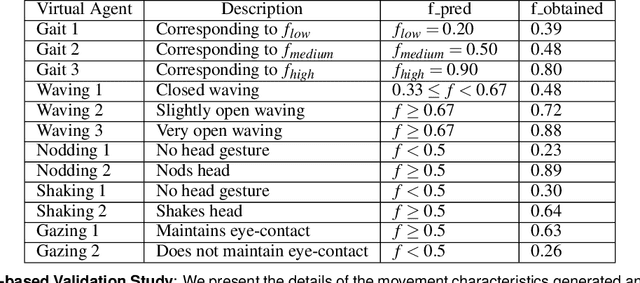


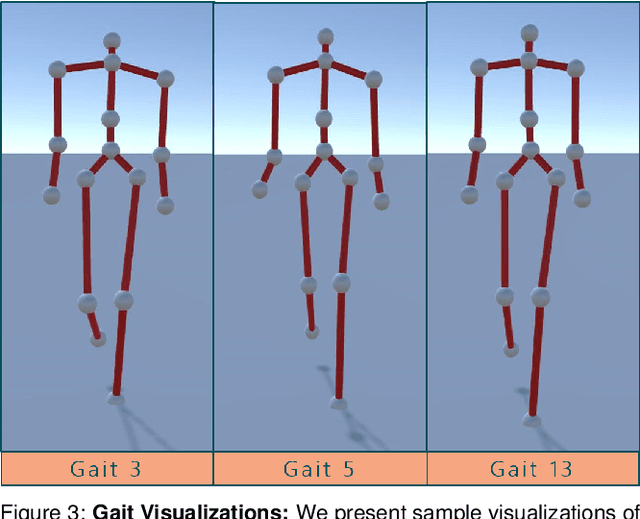
Abstract:We present a new approach for improving the friendliness and warmth of a virtual agent in an AR environment by generating appropriate movement characteristics. Our algorithm is based on a novel data-driven friendliness model that is computed using a user-study and psychological characteristics. We use our model to control the movements corresponding to the gaits, gestures, and gazing of friendly virtual agents (FVAs) as they interact with the user's avatar and other agents in the environment. We have integrated FVA agents with an AR environment using with a Microsoft HoloLens. Our algorithm can generate plausible movements at interactive rates to increase the social presence. We also investigate the perception of a user in an AR setting and observe that an FVA has a statistically significant improvement in terms of the perceived friendliness and social presence of a user compared to an agent without the friendliness modeling. We observe an increment of 5.71% in the mean responses to a friendliness measure and an improvement of 4.03% in the mean responses to a social presence measure.
The Emotionally Intelligent Robot: Improving Social Navigation in Crowded Environments
Mar 07, 2019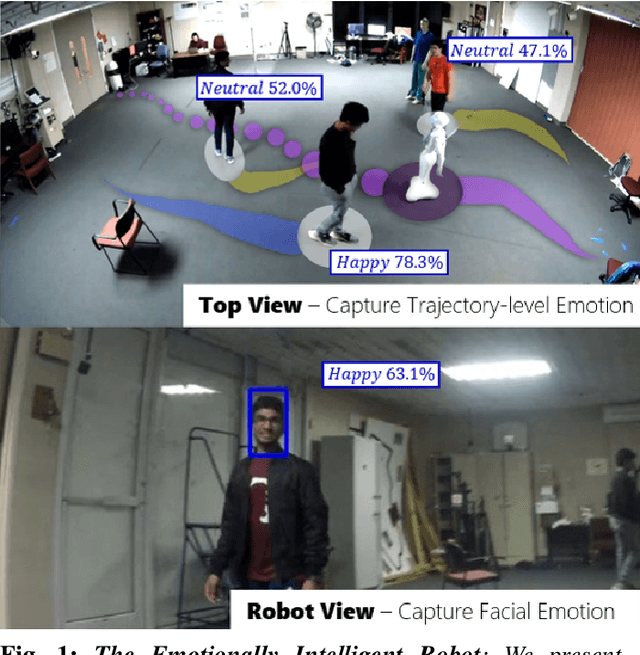

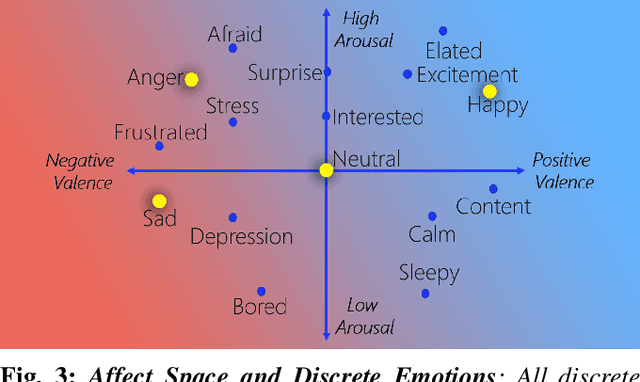
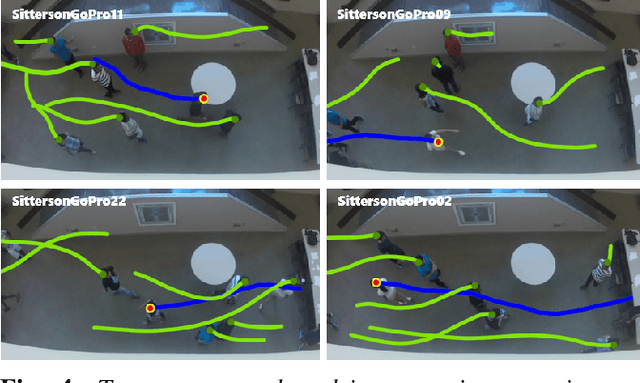
Abstract:We present a real-time algorithm for emotion-aware navigation of a robot among pedestrians. Our approach estimates time-varying emotional behaviors of pedestrians from their faces and trajectories using a combination of Bayesian-inference, CNN-based learning, and the PAD (Pleasure-Arousal-Dominance) model from psychology. These PAD characteristics are used for long-term path prediction and generating proxemic constraints for each pedestrian. We use a multi-channel model to classify pedestrian characteristics into four emotion categories (happy, sad, angry, neutral). In our validation results, we observe an emotion detection accuracy of 85.33%. We formulate emotion-based proxemic constraints to perform socially-aware robot navigation in low- to medium-density environments. We demonstrate the benefits of our algorithm in simulated environments with tens of pedestrians as well as in a real-world setting with Pepper, a social humanoid robot.
 Add to Chrome
Add to Chrome Add to Firefox
Add to Firefox Add to Edge
Add to Edge